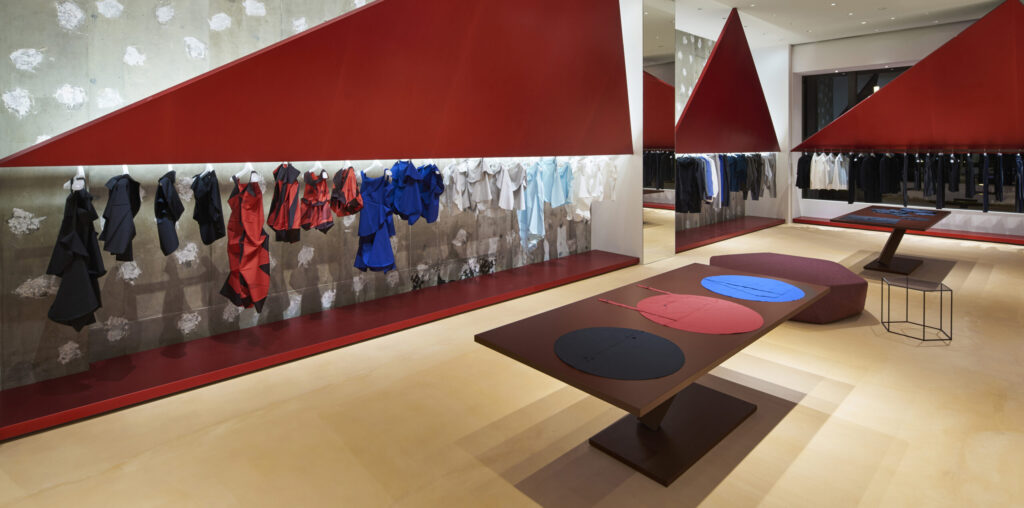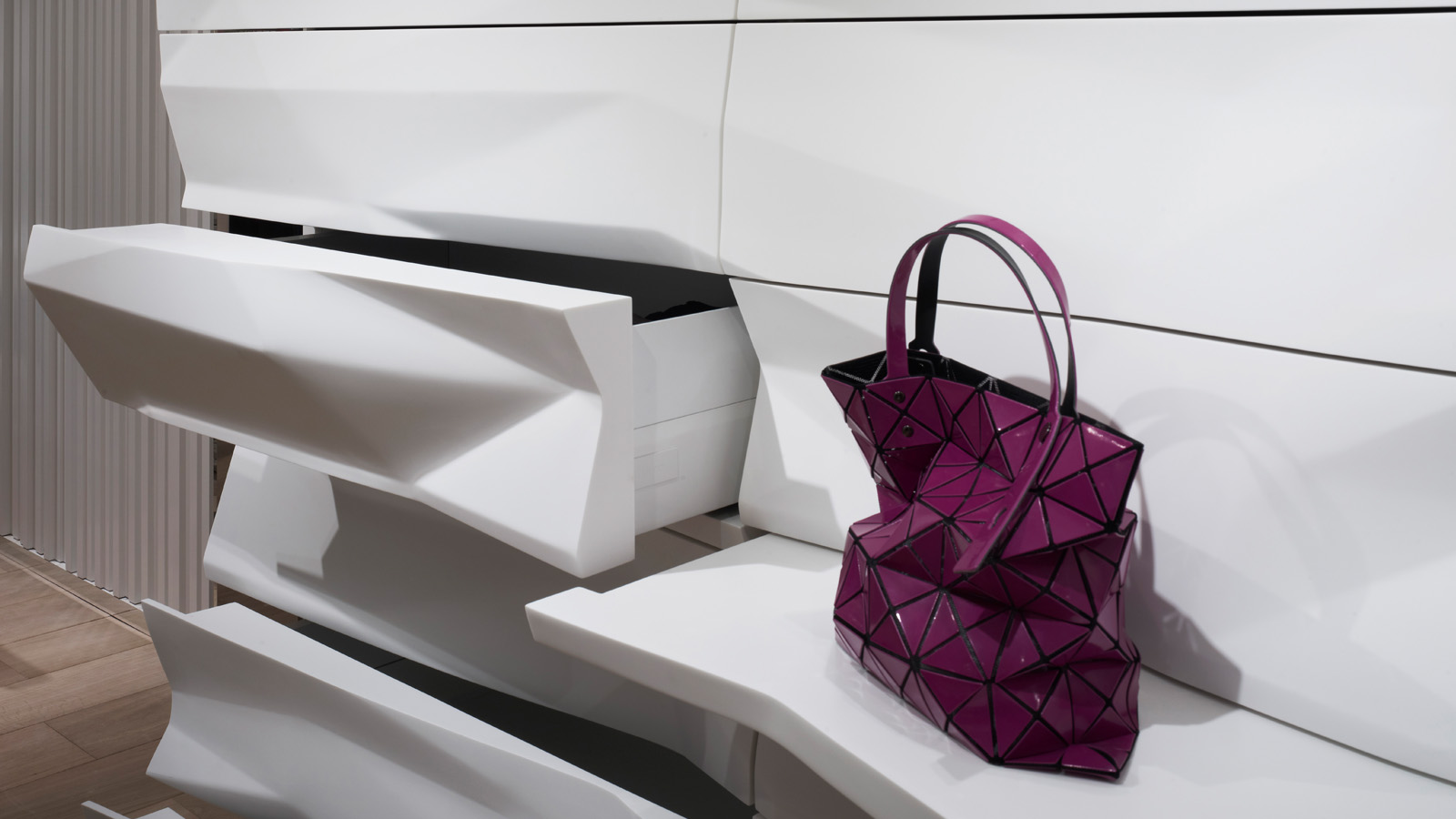Ema is a trained architect, writer and photographer who works as a Junior Architect at REX in NYC. Inspired by her global experiences, she shares captivating insights into the world’s most extraordinary cities and buildings and provides travel tips on her blog, The Travel Album.
Fashion and architecture may appear to belong to entirely different creative worlds, but beneath the surface, they share a deep connection rooted in geometry. Both disciplines rely on shapes, patterns and proportions to give form to their designs, creating structures — whether wearable or habitable — that are deeply informed by geometry. The language of geometry allows architects and fashion designers alike to explore space, materiality, and form in ways that transform their respective fields.
I wanted to write an article that could provide a unique perspective on a topic that people don’t often consider. Join me as I explore how geometry serves as a foundational element for both architecture and fashion, examine key examples from both worlds and analyze how these forms continue to influence and inspire creativity across both disciplines.
Geometry as a Universal Design Language
Geometry, by its very nature, is universal — it provides an essential framework through which designers can communicate form, structure and proportions. Whether it’s the shape of a building or the cut of a garment, geometry helps to establish order and balance in design. In both architecture and fashion, geometry is a tool for innovation, allowing designers to create objects that are visually compelling, functional and aesthetically aligned with mathematical principles.
In architecture, geometry helps shape entire buildings and their spatial layouts. Architects employ geometric principles to design everything from building façades to interior spaces. In classical architecture, symmetry and proportion were paramount, with designs often based on mathematical ratios like the Golden Ratio to ensure balance and harmony. In modern architecture, geometry continues to play a crucial role, with more experimental forms emerging through the use of complex shapes, tessellations and non-Euclidean geometry. Similarly, fashion designers use geometry to develop patterns, cuts and silhouettes, using shapes to enhance the movement, structure and visual impact of their garments.
Geometry in Fashion: From Silhouette to Structure
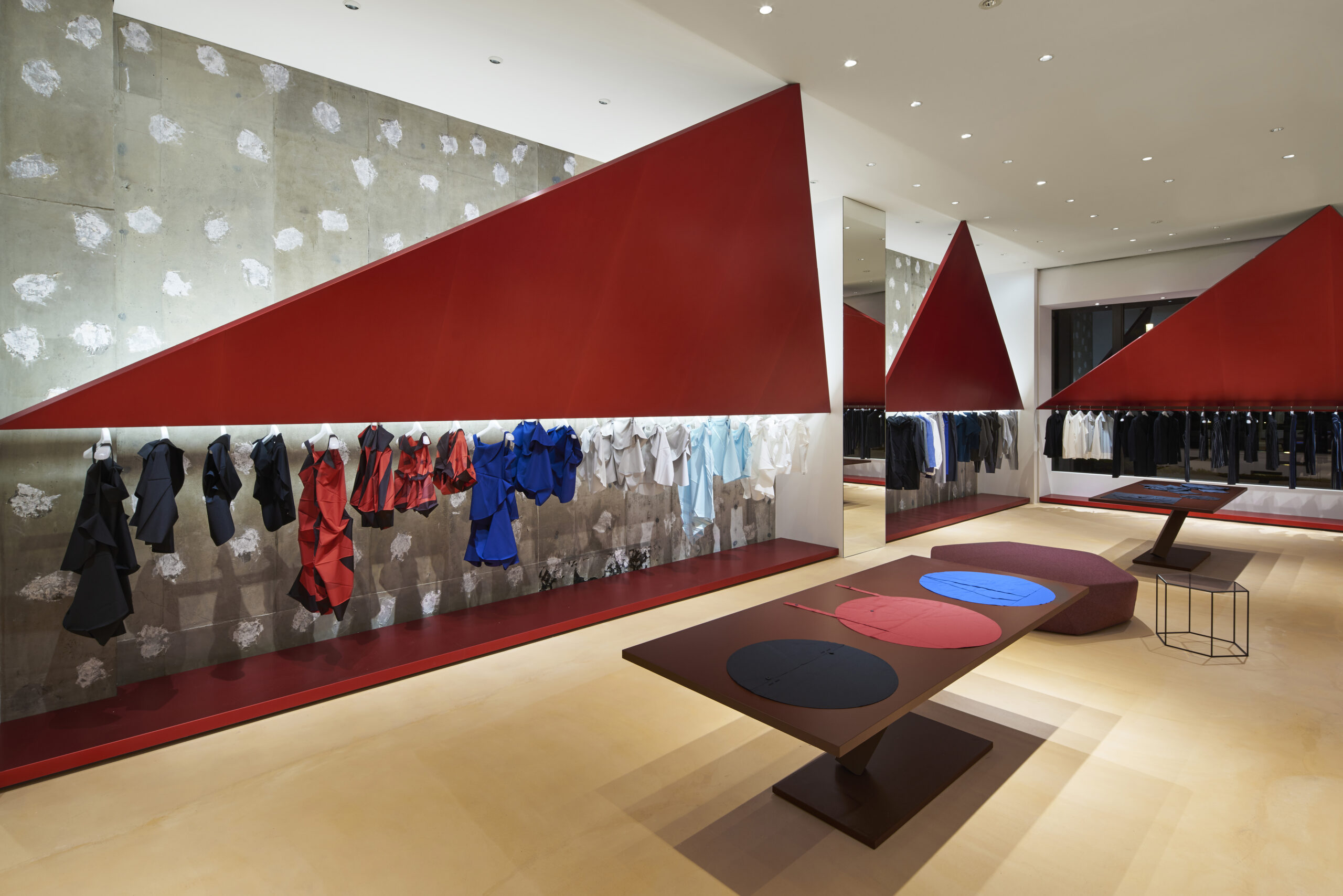
Issey Miyake Marunouchi, Tokyo, Japan by TOKUJIN YOSHIOKA DESIGN
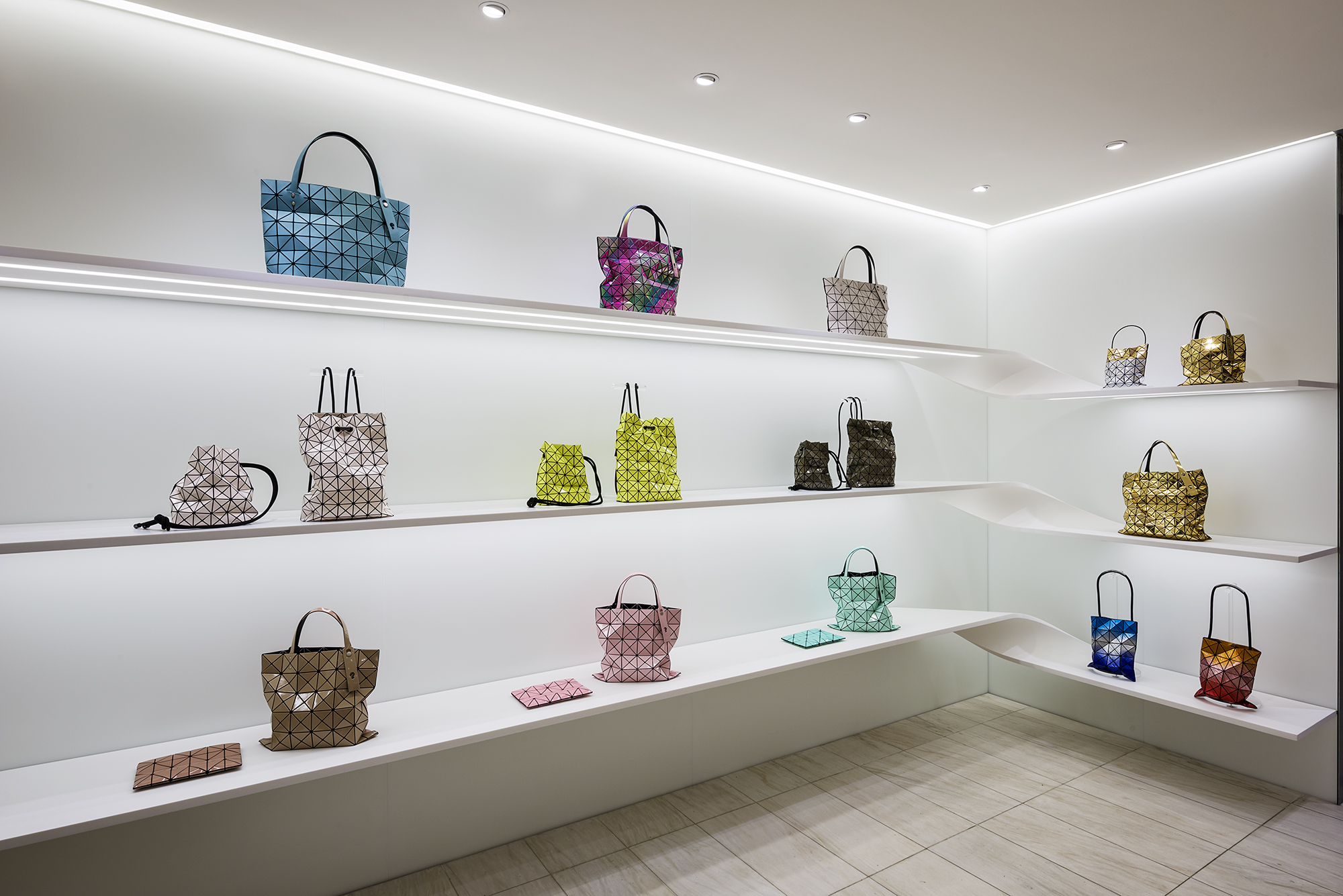
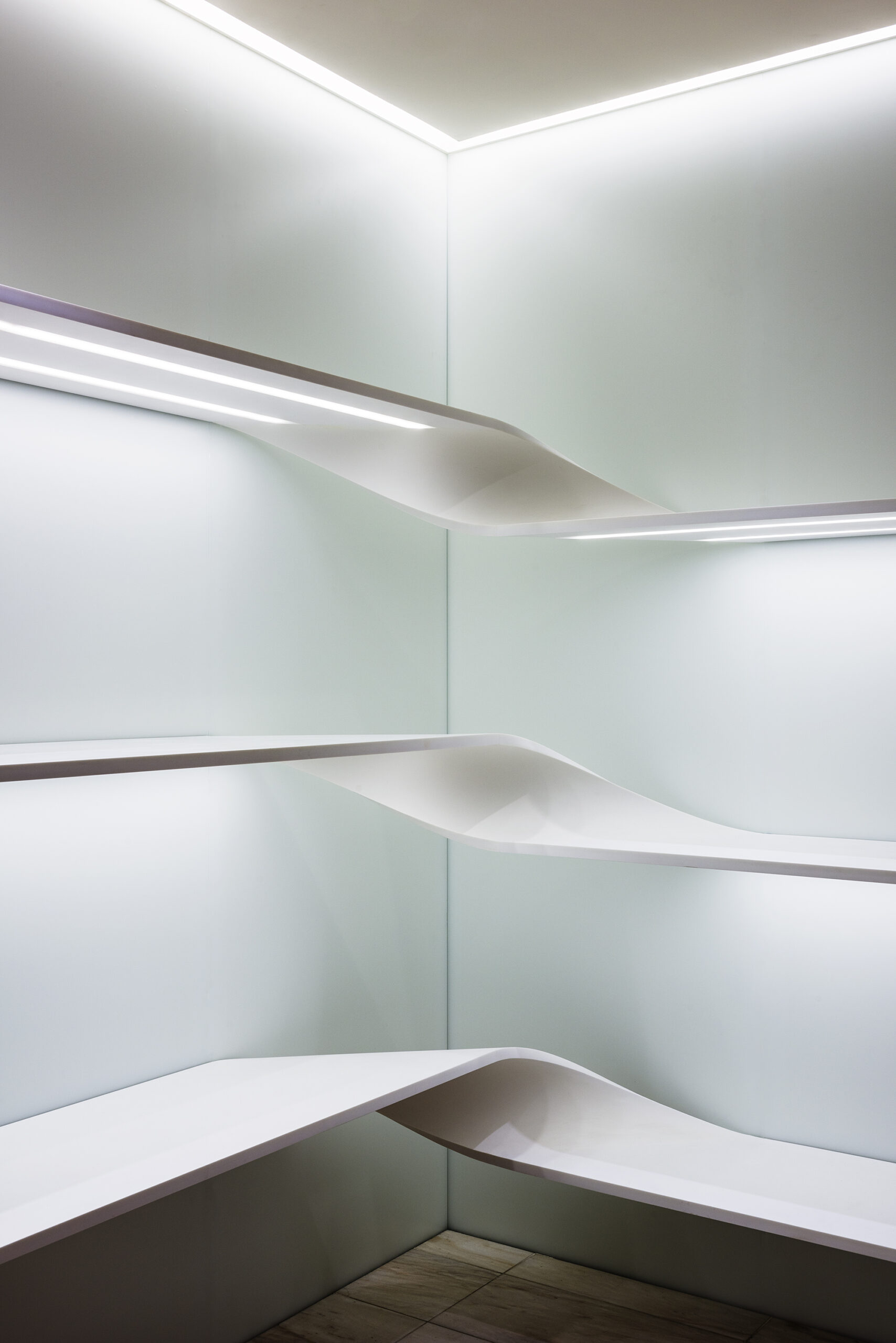
Issey Miyake Pleats Please by Clouds Architecture Office, New York City, New York
In fashion, geometry begins with pattern-making — the process of creating two-dimensional templates that are then sewn together to create three-dimensional garments. Every piece of clothing starts with basic geometric shapes — rectangles, circles, triangles or trapezoids — that are combined and manipulated to shape the human body. Designers use geometry to tailor garments to fit the body in specific ways, creating shapes that are both flattering and functional.
For instance, Japanese designer Issey Miyake is known for his revolutionary use of geometric shapes in fashion. His collections often include garments made from simple yet precise geometric forms that fold, pleat or expand to create intricate designs. Miyake’s use of geometry is not just about aesthetics; it’s about engineering movement and flexibility into the fabric, allowing the garments to transform as the wearer moves. His iconic “Pleats Please” collection, for example, uses geometric pleating to create garments that change in shape and volume, emphasizing the relationship between fabric, form and motion.
Another fashion house that has embraced geometry is Balenciaga. Known for its sculptural silhouettes, Balenciaga’s designs frequently feature bold, geometric shapes that exaggerate proportions — whether through boxy jackets, sharply angled shoulders or trapezoidal dresses. This architectural approach to fashion design illustrates how geometry can be used to create striking visual effects and push the boundaries of conventional garment construction.
Geometry in Architecture: From Façades to Spatial Layouts
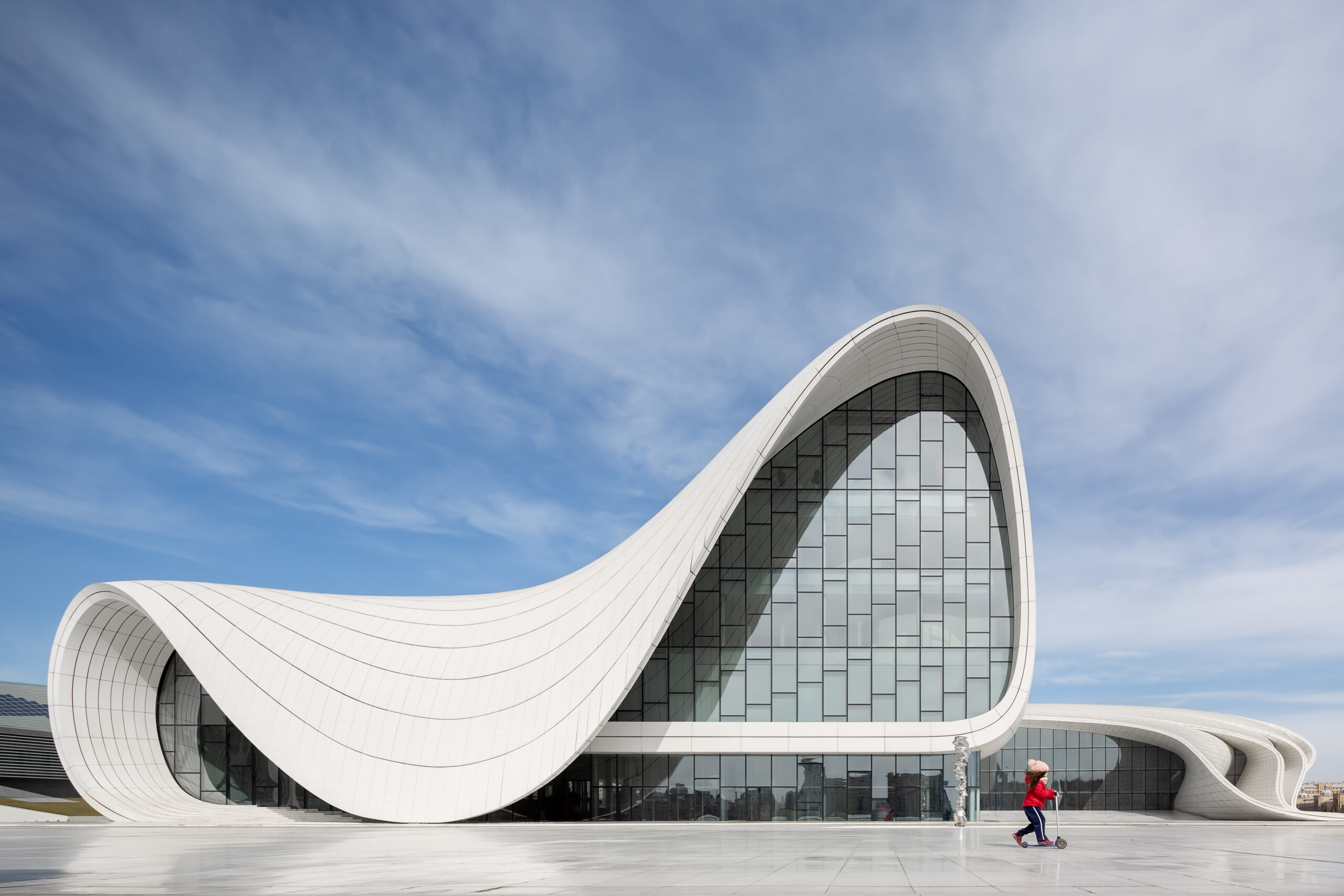
In architecture, geometry is not just a tool for designing individual elements but for orchestrating the entire spatial experience of a building. From ancient pyramids and Gothic cathedrals to modern skyscrapers, geometry has always been integral to architectural form. Architects use geometric patterns to create rhythm and harmony in their designs, often drawing inspiration from natural forms or mathematical concepts like symmetry, tessellation, and fractals.
A powerful example of geometry in modern architecture is the work of Zaha Hadid. Known for her fluid, organic designs, Hadid frequently used non-Euclidean geometry to create futuristic buildings that challenge traditional architectural forms. Buildings like the Heydar Aliyev Center in Azerbaijan feature sweeping curves and complex geometries that seem to defy gravity, creating spaces that feel both otherworldly and deeply connected to natural forms. Hadid’s work illustrates how geometry can be used to push the boundaries of architectural form, creating spaces that are as visually dynamic as they are functional.
In contrast, architects like Tadao Ando and Mies van der Rohe have used more rectilinear, grid-based geometries to create clean, minimalist spaces. Ando’s use of simple geometric forms — squares, circles and triangles — helps create a sense of order and tranquility in his work, often enhancing the interaction between light and shadow. Mies van der Rohe, on the other hand, famously used the grid as a geometric organizing principle in his designs, creating buildings like the Barcelona Pavilion and the Farnsworth House that celebrate the purity of geometry through their clean lines and open, transparent spaces.
The Intersection of Geometry in Fashion and Architecture
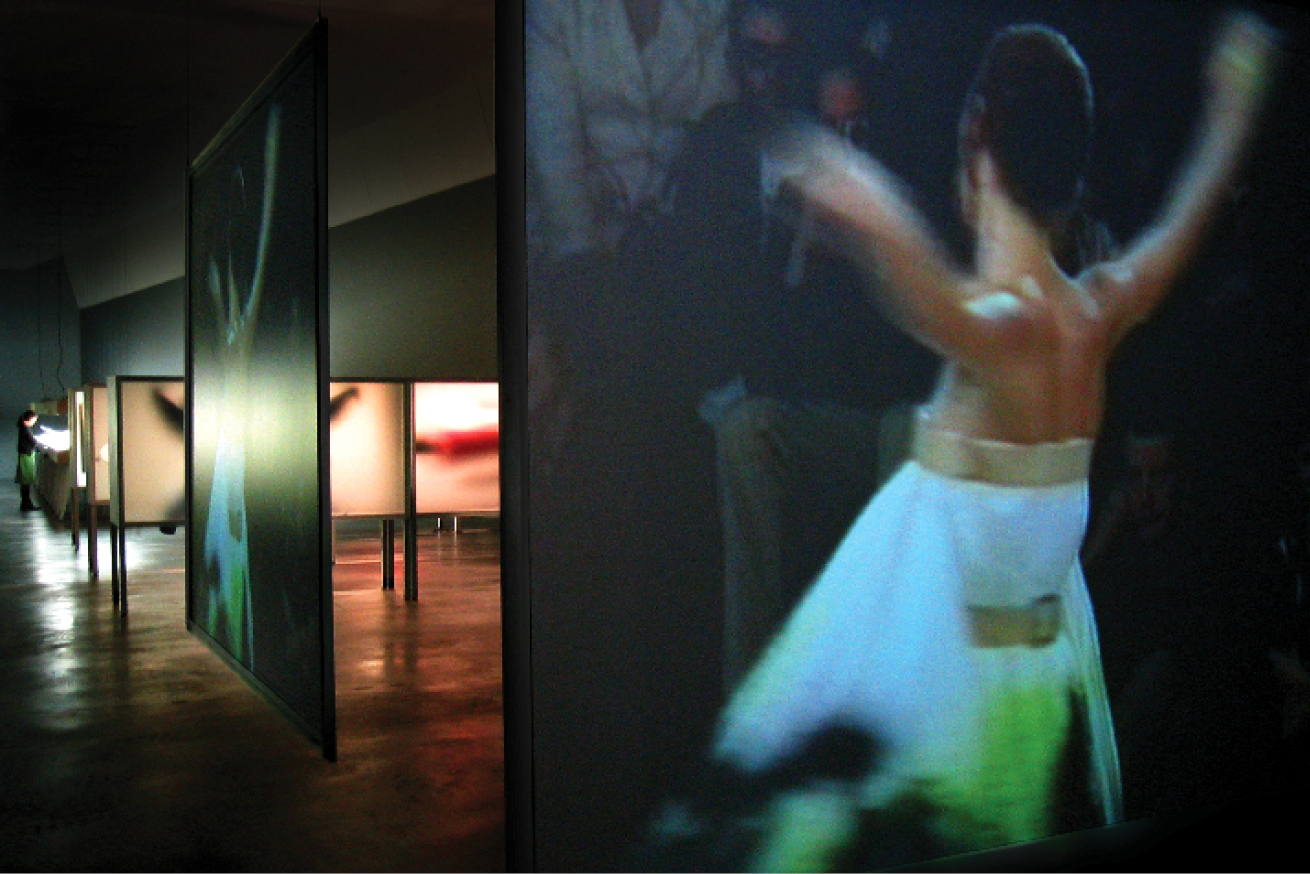
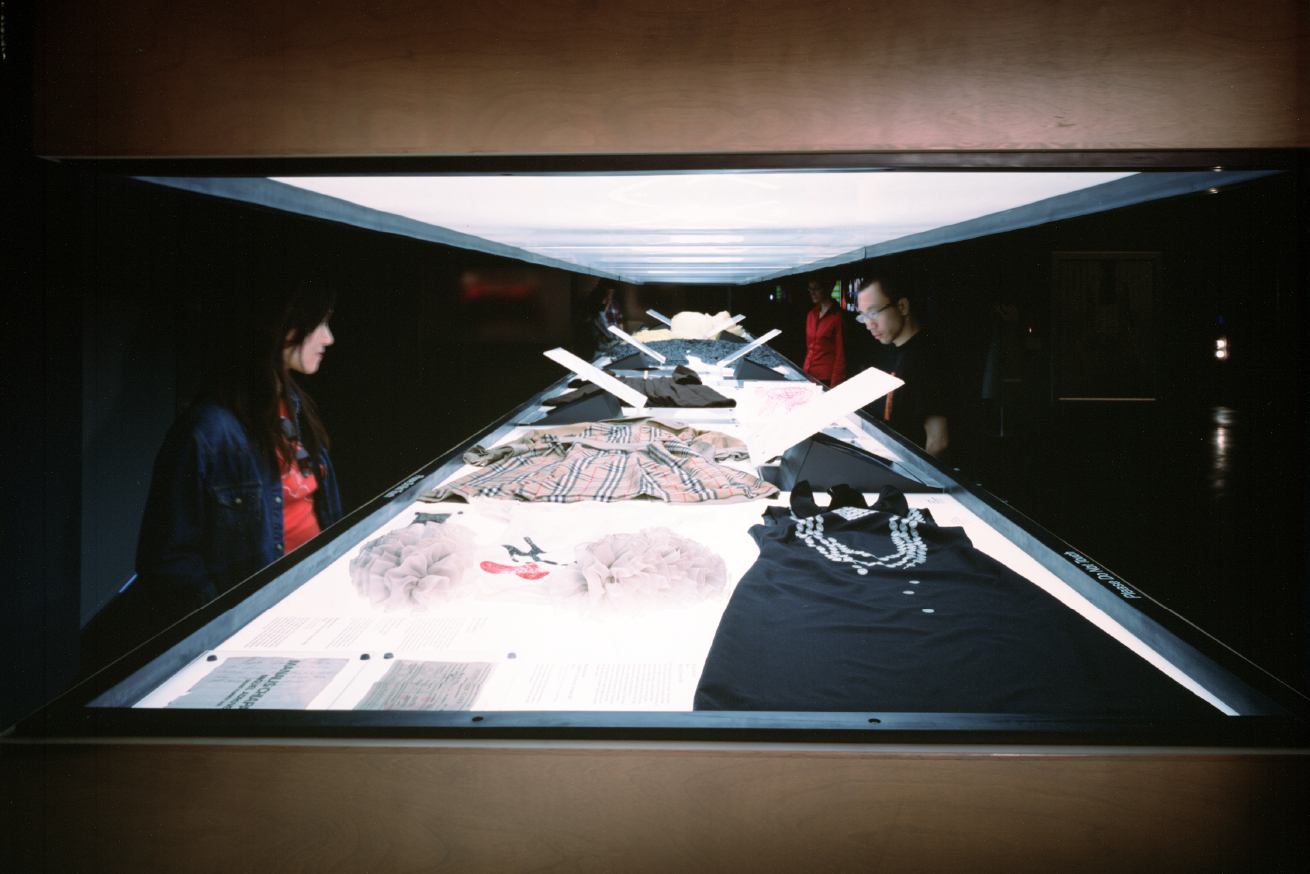
BEYOND THE CATWALK, 2003
The relationship between fashion and architecture is perhaps most evident in the way both disciplines use geometry to explore the interplay between structure and fluidity. For both fashion designers and architects, geometry offers a way to break free from traditional forms and create something new — whether it’s a garment that transforms with movement or a building that challenges conventional ideas of space. One of the most striking intersections between fashion and architecture comes from collaborations between architects and fashion designers. Architect Hussein Chalayan, for instance, has seamlessly merged the two disciplines by creating fashion pieces that are both architectural and transformative. In his 2007 collection, Chalayan unveiled garments that could transform from one shape into another, using motors and mechanics to physically alter the structure of the clothing in real-time. This exploration of geometry and movement demonstrates how fashion can borrow from architecture’s principles of form and structure to create innovative designs.
Similarly, fashion designer Iris van Herpen is known for her architectural approach to fashion design. By incorporating 3D printing and laser cutting into her work, van Herpen creates garments that are not only sculptural but also deeply rooted in geometric principles. Her designs often feature intricate, repeating patterns reminiscent of architectural facades, illustrating how geometry can be used to blur the boundaries between the body and the environment.
Geometry’s Future in Fashion and Architecture
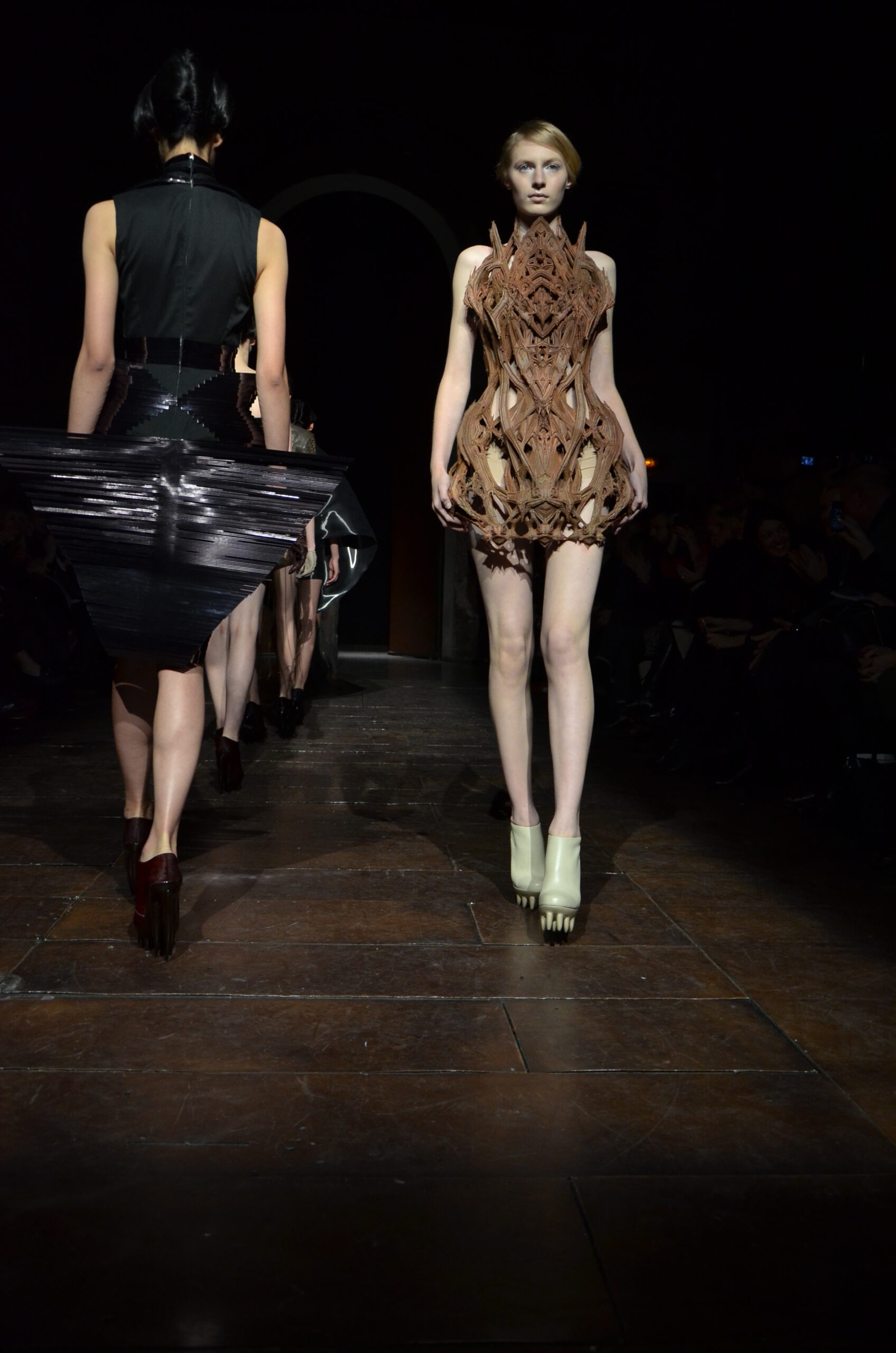
As technology advances, the use of geometry in both fashion and architecture is likely to become even more innovative. New tools like 3D printing, parametric design, and algorithmic modeling allow designers in both fields to explore complex geometries that were once impossible to achieve. These technologies open up new possibilities for creating structures—whether wearable or habitable—that are more responsive, adaptive, and sustainable.
In fashion, 3D printing has already begun to revolutionize how designers think about geometry and form. Designers can now create garments with intricate, customized geometric patterns that are printed directly onto the fabric, allowing for a level of precision and complexity that was previously unattainable. In architecture, parametric design allows architects to use algorithms to generate complex geometric forms that respond to environmental conditions, creating buildings that are not only aesthetically striking but also highly functional.
Fashion and Architecture, A Common Language
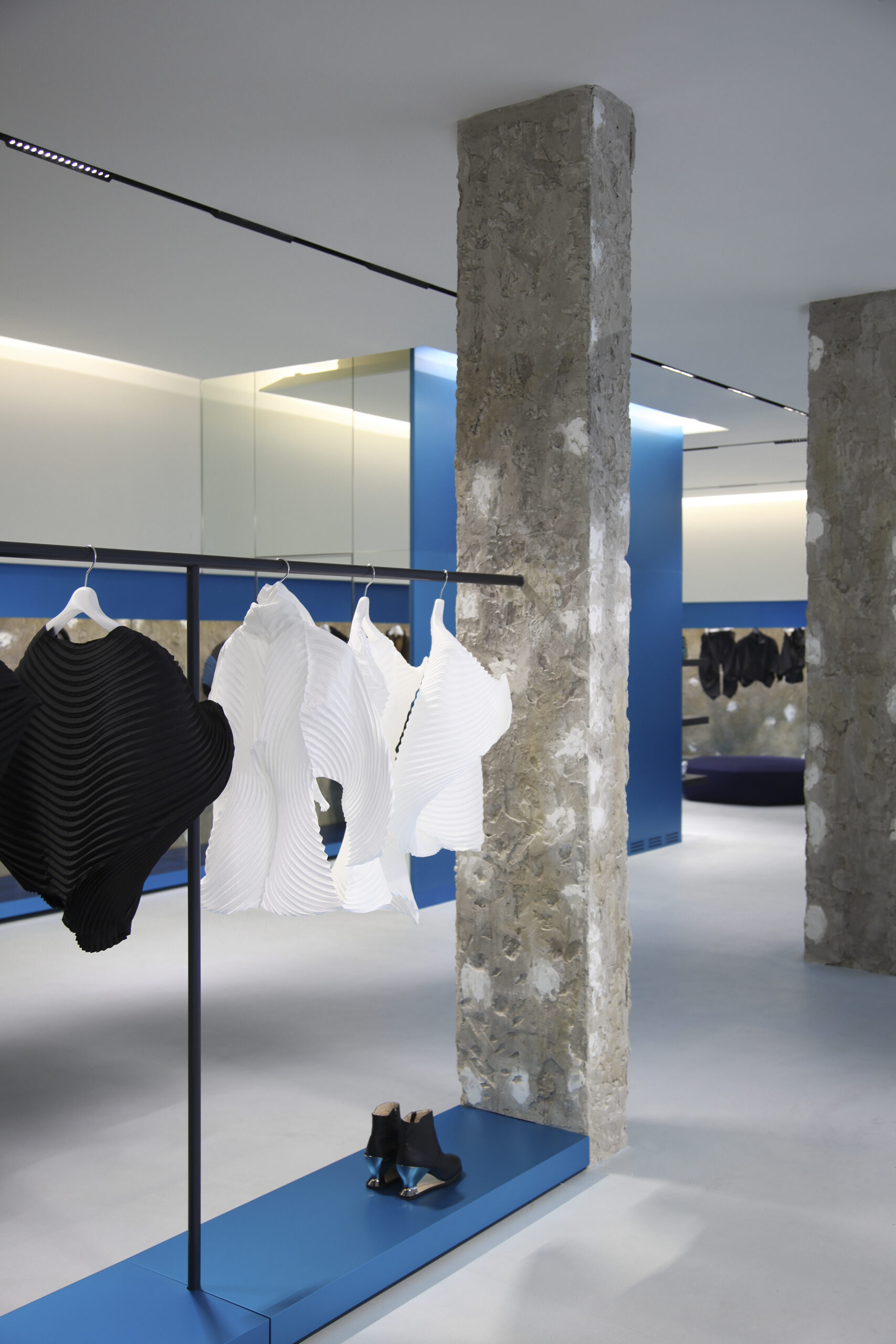
Issey Miyake London by TOKUJIN YOSHIOKA DESIGN, London, United Kingdom
In both fashion and architecture, geometry serves as a common language that allows designers to explore new forms, create structure, and push the boundaries of creativity. Whether through the precise tailoring of a garment or the innovative design of a building, geometry offers a way to blend aesthetics with functionality, creating designs that are as visually captivating as they are purposeful. As technology continues to evolve, the use of geometry in both fields will undoubtedly lead to even more exciting possibilities, allowing designers to create ever-more innovative and boundary-breaking designs.
The 13th A+Awards invites firms to submit a range of timely new categories, emphasizing architecture that balances local innovation with global vision. Your visionary projects deserve the spotlight, so start your submission today!
